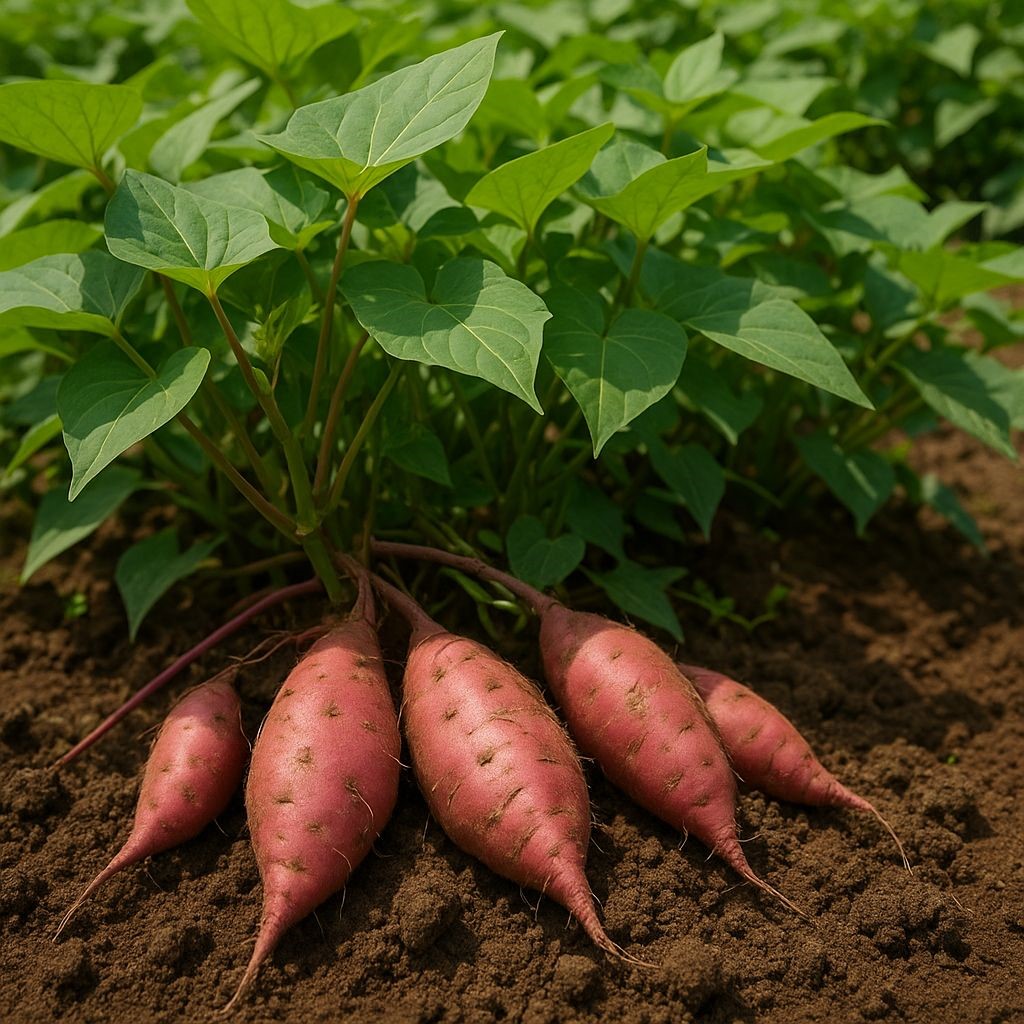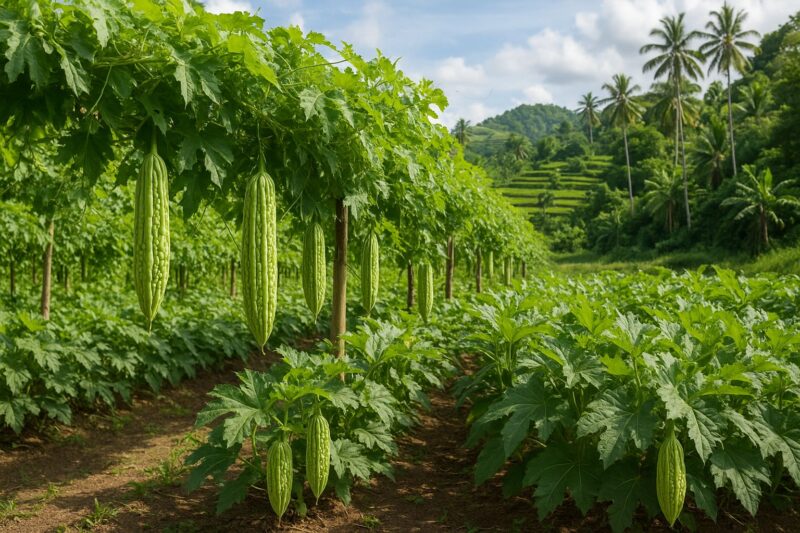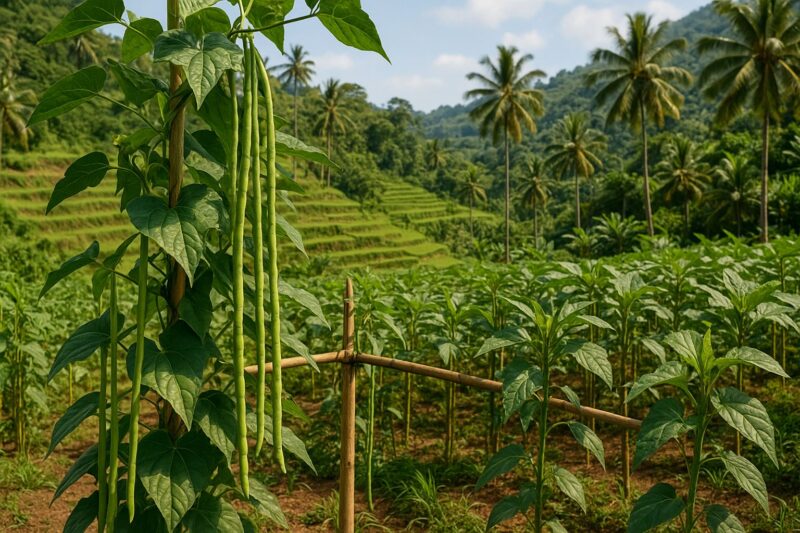Sweet potato—kamote—stands out as one of the most adaptable root crops in Filipino gardens, thriving from coastal Leyte to upland Bukidnon. Its creamy, orange-fleshed tubers store well and feed families, while young shoots and leaves make nutritious greens. Yet to coax full yields, you need more than toss‑and‑hope planting. Over several seasons in Bulacan, with tips from Cavite growers and upland farmers in Ilocos, I’ve settled on a few key steps—soil health, variety choice, bed setup, feeding, pest vigilance, and harvest timing—that deliver plump kamote tubers almost anywhere in the archipelago. Here’s the approach that works.
Variety Selection
Kamote varieties range from pale‑fleshed “suave” types to deeply orange, beta‑carotene–rich rounds. In Bulacan’s lowland heat, I favor orange‑fleshed Slipstream and vines from Laguna nurseries called “Davao Red,” prized for consistent tuber shape and skin smoothness. Upland growers in Benguet often choose white‑fleshed Manila types for their cooler‑climate resilience. Mixing two to three varieties across your beds hedges against unpredictable weather and gives you options for boiling, roasting, or making chips.
Soil Preparation
Sweet potatoes thrive in loose, well-draining loam. In clay‑heavy patches—common around Bulacan’s lower tracts—I dig in two wheelbarrows of homemade compost and rice hull charcoal per ten square meters to improve structure and aeration. Coastal sandy soils—think Samar or Palawan—get a boost from aged goat manure or coconut coir to hold moisture without compaction. Aim for pH between 5.5 and 6.5. A quick field test—a sprinkle of lime and vinegar—helps gauge acidity, though a proper kit from agricultural centers gives better guidance.
Bed Design and Planting
Raised beds are a game‑changer where waterlogging or clay pockets threaten tuber rot. I build ridges about 20 centimeters high and 50 centimeters wide, spacing rows a meter apart. Plant cuttings—vine segments 20–25 centimeters long with at least three nodes—at 30‑centimeter intervals down the ridge’s center. Bury two‑thirds of each cutting, leaving one node and its shoots above ground. In lowland Bulacan, I time this for June or July, right before reliable rains. In eagle‑cool uplands, a September planting avoids chilly nights and lets vines flourish under the October sun.
Feeding and Mulching
Sweet potatoes feed heavily early on. At planting, I sprinkle a handful of bone meal—rich in phosphorus—into each hole. Four weeks later, when shoots are 30 centimeters tall, I side‑dress with decomposed chicken manure or compost tea along the ridge’s outer edges, letting nutrients filter into root zones. Mulch with rice straw or chopped leaves to conserve moisture, suppress weeds, and gradually feed the soil. Too much fresh manure against stems can burn vines, so keep organic matter just beyond the root collar.
Water Management
Once established, kamote vines tolerate short dry spells but yield best with consistent moisture during tuber bulking. I water deeply in the early morning—saturating the ridge and letting excess drain—then allow surfaces to dry by afternoon. In raised beds, this balance comes naturally. If rains stall for more than ten days, I supplement with one additional watering, always checking soil by feel: a handful should crumble, not ball up.
Pest and Disease Checks
Kamote faces few major pests, but wireworms and sweet potato weevils can strike underground. Crop rotation—planting non‑root crops like corn or legumes between kamote seasons—breaks pest cycles. I inspect vines weekly for weevil exit holes—small round pits—and remove infested tubers at harvest. Aphids and whiteflies on new shoots respond to early‑morning water sprays or a mild neem‑soap rinse. Leaf‑spot diseases rarely spread widely; pruning damaged foliage and improving airflow usually halts them.
Harvest Timing
Tuber maturity depends on variety and climate—between four and six months after planting. Manila types may be ready in 120 days, while Davao Red can take up to 150. Watch for vine yellowing and dieback; that’s your cue. To test, dig up one cutting by hand, brushing back soil to check tuber size and skin firmness. If the flesh snaps cleanly and skin resists gentle pressure, you’re ready. Harvest after a few dry days so skins set and storage life improves.
Postharvest Handling
Handle tubers gently—bruises invite rot. Shake off loose soil and lay tubers under shade for one day before storage. In a ventilated, shaded shed, you can keep kamote for up to three months. Use well‑ventilated baskets lined with banana leaves to prevent direct sun and reduce moisture loss.
Case Study: Cooperative Ridge Farming
In Pampanga, a group of backyard growers teamed up to build shared raised beds. They rotated three varieties—white, orange, and purple—planting every two months for continuous harvests. By pooling compost and labor, they reduced costs and filled local wet markets year‑round, earning up to 20 pesos per kilo more than seasonal offerings.
Sweet potatoes may not carry the glamour of dragon fruit or avocados, but their steady yields, nutrition, and storage life make them indispensable. Across the Philippines—from coastal plains to mountain slopes—mastering variety choice, soil health, bed design, feeding, moisture, and harvest timing ensures kamote remains a reliable source of food and income. And hey, if you catch yourself chatting with your vines during long afternoons—that’s just part of the fun.
I’m open for consulting and speaking opportunities on sustainable root-crop and vegetable production nationwide. Let’s grow resilience together.
#Kamote #SweetPotato #PhilippineFarming #SustainableAgriculture #HomeGarden #ConsultingAvailable #SpeakingOpportunities




